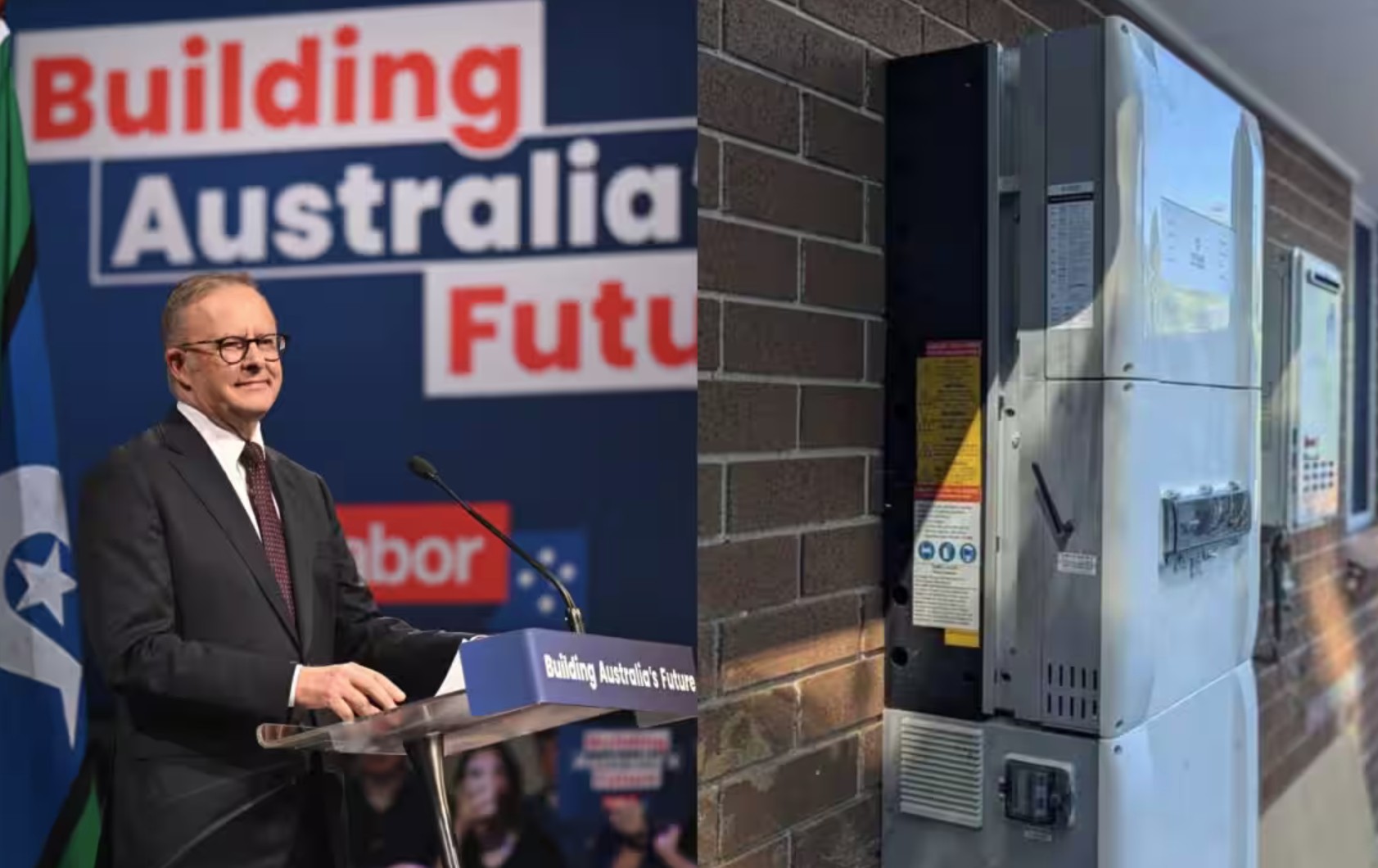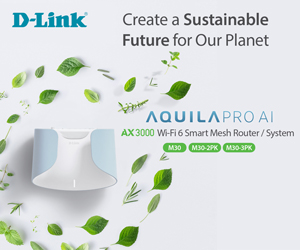The truth about the solar battery con is that it affects less than 10% of Australian households. Australia’s 4m solar panel installations may not be battery-ready, with many requiring expensive retrofits or simply not being able to afford them.
Please consider that CyberShack has significant expertise in rooftop solar, including
- A three-part series that follows the path from the desire to have solar (Part 1) to the investigation into solar (Part 2) and the result (Part 3).
- A rooftop solar guide for Strata buildings
- We will publish actual figures for the test home in July.
The Labour campaign promise
$2.3 billion Cheaper Home Batteries Program from 1 July 2025, reducing the cost of a typical installed battery by 30% – with over one million new batteries expected by 2030.
There are no significant published policy details.
Here are a few of the reasons why the solar battery con may not work for you
Not all will apply, and statements are general in nature.
History – Rudd’s Pink Batts Disaster

In 2009, former PM Kevin Rudd promised to insulate two million homes in two and a half years at around $2.45 billion. This was a key component of the Australian Government’s Home Energy Efficiency Program, just like the new Battery scheme!
With no installation certification requirements or formal safety training (at even the basest level), new installers flooded the market (it went from 200 qualified installers to 8300 largely unqualified ones). Every man and his trailer were now a potential insulation business, combing the streets and knocking on doors with a cheery offer of ‘free insulation’ to surprised residents.
Many things happened
- The price of installed pink batts doubled (or more). After all, the Government was paying
- Dirty deeds, done dirt cheap. Many homes never got the pink batts, although the installer was paid (sounds like NDIS).
- Installers were paid rebates on inflated costs to offer a no-cost sale.
- 30% of a sample of 13,000 post-plan audits found significant concerns. These included installation, damage to plasterboard ceilings, installations that could have been deadly, and more.
- Supply could not keep up with demand. Horribly inefficient insulation was often used (shredded newspaper, reflective foil, and spray foam were common) or cheap, sub-standard imports from China.
- People died
- But the Government received the green energy credit and certificates for its part in reducing global warming.
The scheme was such a disaster that it was stopped in early 2010. Only 1.1 million homes were done (some very poorly), and $1.4 billion was paid out.
A Royal Commission found
- Widespread installer fraud
- The government’s inability to handle such a program
- A manifestly unsuitable product
- No OH&S or installation training.
- Poor planning and poor implementation.
This was another brilliant Rudd thought bubble akin to the NBN scheme hatched on the back of a serviette!
The Battery scheme qualifies as another thought bubble. We hope that these points are helpful to you.
Rebates = Cowboys
Already, less ethical rooftop solar companies are installing battery systems. They won’t commission them until after the election to get the rebate.
The big cowboys can offer this, but the reputable local installers can’t self-finance this sales style. They are already going to the wall.
Larger companies are pressuring Chinese manufacturers with the promise of more orders to produce more cheap, nasty lithium-ion batteries. These will help them make a super profit when sold at traditional retail prices!
And the biggest porky is that a 5kW battery is all you need. A family of four will need between 10 and 15kWh battery just to make it through the night.
Update 15/4/25
Reader Ted from Moonee Ponds, Victoria, wrote:
Two months ago, I got a quote from one of the ‘big’ guys for a 5kW battery at $4800 installed. They have just contacted me, and the new quote is $6,900 less the 30% rebate ($4760). The battery can be installed now, but it won’t be commissioned until after the election. They warned that battery prices were about to skyrocket, so I had better accept the quote now.”
While the video below is about the NSW Government rebate, you can simply substitute the latest Government scheme.
Battery Size
A 5kWh battery (5000 watts for an hour or 1000W for five hours) is barely enough to power a typical home’s 5kWh overnight base-load (fridge, IoT, lighting, TV, cooking). Add an Airfryer, kettle, toaster, dishwasher, and clothes dryer (1000-2000W each), and you can see why you need a bigger battery.
These batteries typically cost $4000-$6000 plus installation, which can be another thousand or so. You want a more expensive LFP battery, not a Lithium-ion firebomb. Cheap batteries are $400-600 per kWh, and better AC-coupled ones are closer to $1000 per kWh.
A 10kWh battery will handle the base and cooking loads for a family of four. It may give you enough spare capacity to export some to the grid.
A 15kWh battery is the best investment if your panel capacity can provide enough charge.
These batteries typically cost $1,000 per kWh or more.
Where are you going to put it?
Most batteries are barely weather resistant IP56 (not IP67 weather-proof). They should be under cover, in the garage, etc. Few are marine or hazardous environment rated (essential if you live within a few km of the sea).
Most low-cost installs have the inverter screwed to a convenient outside wall. New cabling to a safe location costs another thousand dollars or so.
A 5kWh battery weighs 40 to 60kg, and a 10kWh battery is twice that. These weights may be too much for a wall mount needing a concrete base.
Charge rate
A typical DC 6kW system (15 x 400W panels using a string inverter with a 70% efficiency) will be lucky to produce 6-7kWh DC in a typical day. That may cover home use during the day, but where is the extra 6kW to recharge the battery? Don’t be fooled – solar panel capacity needs to cover use and charging.
Even the best, most ideally placed/pitched 10kW rooftop solar (25 x 400W panels using Enphase micro-inverters with a 97.3% efficiency) tops out at 35-37kWh in Summer (350-370W per panel per day) and half that in Winter. Of course, this handles 10kWh charging, and some export to the grid.
You may need a new inverter
You can add AC-coupled (more expensive) batteries fairly easily to most existing inverters. But DC-coupled (cheaper) may require a new inverter or hybrid system. A new hybrid inverter will cost from $2500 to over $6000.
You can also buy a battery with an integrated AC inverter. We won’t discuss DC (cheap) versus AC-coupled (better) batteries except to say that AC is way safer and more efficient.
New app
Only fully integrated systems like Enphase can use the same app for the inverter, battery, panels, and EV chargers. This app monitors battery life, condition, faults, etc., which is vital to maintaining battery charge capacity. The app also gives you the option of using the system
- Off-grid (microgrid)
- Full backup (especially useful in bad weather when blackouts occur)
- Low-cost on-grid power to recharge at night.
Most add-on batteries require separate apps and a costly Wi-Fi/ Ethernet/Internet comms unit that does not interact with the solar inverter.
Smart meter – you may not be in control
Rooftop solar and batteries require a smart meter. This theoretically means that the energy provider can:
- Manage your grid feed-in (stopping it when the grid does not need it).
- Manage battery (using it when the grid cannot keep up with peak demand).
- Change energy tariffs to time of use or even quarterly time of use.
We are not suggesting anything more than someone else may have control of your battery and take your power when you need it. Better batteries allow you to set some reserves.
In the future, that meter may allow your battery to be connected to a Virtual Power Plant (VPP), and you sell and buy energy from that at different rates. With a VPP, you lose all control. Read VPP – Beware of the solar battery trap.
That raises the impact of VPP on battery life and warranty. Let’s say the manufacturer offers a 10-year limited warranty based on 4,000 recharges (one per day) and a 60% depth-of-discharge cycle (10-70%). It is too early to calculate the impact of the VPP on warranty. Our expert says a VPP could see a 10-year battery warranty expire in half the time. To be clear, the warranty is based on a fixed number of full discharge cycles, and VPP can increase these.
The ABC got it right—smart meters are not for everyone and give more power to the energy supplier than they should.
Vikki Campion raised issues about Labor’s solar battery con in the Daily Telegraph on 12 April 2025
- The $2.3 billion scheme is taxpayer-funded (our money). It is expected to result in 1 million battery installations by 2030. This is fewer than 10% of the current 10 million households. Ergo, 9 million are subsidising the few elite who can afford solar panels and batteries.
- That 9 million households will pay ever-increasing electricity costs that have risen 47% in the past 5 years. These are in line to rise by at least 30-40% in the next five years.
- It does not help renters, apartment dwellers/owners, or homes with the wrong roof to support rooftop solar.
- It does not help those who cannot afford a battery.
Is a solar battery worth it?
- From our perspective, an appropriately sized battery that meets nighttime and blackout needs is a massive convenience and reduces grid dependence to around 10-20% (for rainy days). So, if your bill was $4000 per year, it will be $400-800 now.
- Is the $12,000+ installed battery purchase price worth it? Our entire system currently has a 10-12 year payback based on 10% grid dependency. Electricity prices will continue to skyrocket. Without a battery grid, dependency would be around 50% or a 20-year payback.
- We will get an even shorter payback period if we buy an EV and use more solar energy.
The caveat is that low-energy users won’t benefit at all.
CyberShack’s view: The solar battery con won’t help most Aussies
We started this article with extensive interviews with a battery maker, solar installer, solar importer, and energy use expert. We only wanted the ‘tech’ – no political statements allowed.
Before we could ask a question, all responded that Rebates = Cowboys. They unanimously told us that these types of rebate schemes never deliver the government’s objectives or a better outcome for consumers. Hence, our reference to Rudd’s disastrous pink batts scheme earlier, not to mention NDIS rorts and many others.
And 1 million batteries is a drop in the bucket for 10 million households (about 4M have rooftop solar). The scheme needs much closer scrutiny, as it does not add up for Joe and Jane Average.
As Thomas Edison said, “Vision without execution is hallucination”. That sounds like the solar battery con.
The meat of this video below starts about 3 minutes in.








30 comments
Ted Keam
Ray
Solar is good in the summer, runs our house and reverse cycle AC during daylight
We recently had a Battery installed because of frequent blackouts here, it’s too early yet [and confusing]to tell if were ahead on electricity bills.
The AC and Kettle draw battery down quickly, we wish we chose larger battery.
Our battery has worked out for blackouts so far, keeping fridge running and minimal lights on which is why we wanted it
Ray Shaw
You bought for the right reasons – to help with blackouts and self-sufficiency. You can’t put a value on that. What most people don’t understand (and you do) is that a battery is just a fuel tank for a car. Fill it up (for free from the sun), and then the faster you drive or the more weight you have in the car, the worse the fuel consumption. A 10 kWh DC battery really only delivers 750-850 AC Watts for an hour. Put on a 1500W kettle or a 2000W heater, and the battery is exhausted in a few minutes. Only this fuel tank is $13K plus!
Jeff Lats
When I read the post I thought, wow, this reads like LNP propaganda. The facts are distorted and the quote by Vikki Campion sealed it. It is LNP propaganda. If you want to move into the shock jock space, that’s your business but you have lost a lot of credibility with this unattributed article.
Ray Shaw
The facts are accurate, and attributed were necessary. It is your right to dispute the facts as you see them, but not attack reputable journalists making baseless, unfounded and unattributed accusations.
Jeff Lats
All the information on battery sizing, inverter issues, location etc are all good advice The cowboys are a fact of government rebates, be it 1st home buyers or batteries and it is a reasonable point. In my view, where the line gets crossed is the pink bat comparison and the article becomes political.
The comparison to the pink bats is a distortion as all batteries need to be installed by licensed electricians hence the argument is is based on a false premise. If you are arguing that untrained sparkies will be doing the work, then that’s where the network providers come in as they inspect all the installations.
Ray Shaw
Hi Jedff
We are both on the same side, trying to get accurate information to help readers make decisions, so I welcome any updated facts. The Pink Batts comparison was to show that government schemes like this seldom achieve the best outcomes for either the government or the end user. It does not hurt that I knew KRUDD quite well and did a lot of work for his government at the time. Libel laws prevent me from elaborating. Now we will disagree on the licensed electricians because we have proof that some of the larger direct selling companies have a pool of tame electricians who sign off based on photographs, not inspections. I understand that there was a suggestion to limit the number of certifications a CEC-approved electrician can do per month, but I can’t find out if that has happened.
Elizabeth Jensen
I’d like a ‘for dummies ‘ explanation of demand rates. My bill has peak , off peak , shoulder then demand summer , demand winter , demand temperate.
Truly. !!!!
How to
Confuse !!!
Ray Shaw
Happy to do that as part of Rooftop Solar Part 4, due out later in June. I had to do it ‘graphically’ before it made sense
Peter
“The caveat is that low-energy users won’t benefit at all.”
I don’t have PV and really can’t see even how PV is worth it, let alone with batteries.
The whole thing is back to front. Should not low-energy consumers be rewarded for being environmentally friendly first before rewarding energy gluttons who, as you have stated will benefit more?
By making energy cheaper with batteries and/or PV people just naturally tend to use more, it is human nature, thereby worsening the mindset of energy gluttony.
Ray Shaw
You are partly right, but many (like me) are more concerned that energy prices are skyrocketing, baseload cannot be met with renewables, energy supply/quality is becoming more erratic, and solar and, to a lesser extent, battery power are ‘socially’ responsible. But for many who just run a typical load (5mWh a year – $1000-1500 per annum), solar and, to a much lesser extent, battery power just don’t make economic sense. What I have found is that rooftop solar makes you more aware of energy costs and the best times to use energy-hungry devices. What annoys me is that this scheme is more about the government getting Paris Accord credits than actually fixing the issue. Community batteries are the answer, and no one is listening.
Peter
Ray, community batteries are starting to happen over in WA in small country towns. They have found it is cheaper to have community batteries, solar and a diesel generator for backup rather than very expensive long transmission lines with their high maintenance and fire risks. It was on TV or in the paper a number of months ago. I cannot remember the country town they were talking about. This is an example where cold hard logic and honest accounting might actually pay off. We will see.
Ray Shaw
If the government had invested a fraction of what it spends on blue-sky renewables, it would have solved the consumer’s power problems far more easily and cost-effectively. Read https://www.westernpower.com.au/resources-education/network-improvements/network-upgrade-projects/powerbank-community-battery-storage/
David
I agree with some of your statements. Fitted solar 11 years ago, new inverter 9 years ago. This is a 5kW system that is in Victoria. Generation 58.92 MWh, Self Consumption 10.11 MWh, Consumption 19.65 MWh, From Grid 9.54 MWh over the 9 years. Electricity bill is around $400 per year without fit. Heat Pump heating, cooling, heat pump hot water, induction hob. Not really worthwhile at the moment to install a battery. About to disconnect the Gas which will reduce the connection fees by about $360 per year and that will go to paying for electricity. When the current system fails I will then update the solar and get a battery. I have 3 to 4 months of low generation in winter. Producing only 350 kWh for the lowest month.
Ray Shaw
Thanks David
These are interesting figures, and I suspect they are pretty typical for energy-conscious households. My 10kW solar and battery system was installed in late December, so I am waiting until late June to do the Rooftop Solar Part 4 about actual half-year costs and ROI. It is interesting that in January and February (Central Coast NSW), we produced 1.2 MWh, March 983 kWh, April 807 kWh, and May 511 kWh, which for the 5 months is an average of 25% grid reliance and 2.3 MWh exported for a lousy 5c or $115 – cannot win. That is less than I expected, but it was very wet and overcast, and winter sun shines at a different angle. The thing about batteries is that smaller homes and lower energy users don’t need them. It is when you consume more that you begin to get a payback – free solar energy in the battery or pay 70 cents peak or 35 cents shoulder – the value in that battery.
David
Ray, Thanks.
Further information. The system has a total cost of $9000, including additional panels and inverter replacement. Started with 3 kW, now 5 kW. Electricity bill prior to solar was $950 per year, 11 years ago. Assuming that would now be about $1600 per year now. Virtually no bill until the last couple of years as I have been heating the house with mostly heat pumps instead of a small amount with Gas central heating. With current fit of 0.033c I have a bill of $240 per year.
Ray Shaw
That is being enery aware and smart – thanks for the update.
Dean Thomas
Couldn’t agree more here in Victoria at present would take over 13 years to pay back with a likely battery lifespan of 8 years and we still have to be connected to the grid id like to see a system where all solar owners have the ability to disconnect there feed in to the grid and then we could all stop our feed in at the same time and see then if they still want to pay there appalling feed in rates
Ray Shaw
A battery is justified for blackouts, night use, and peak tariff. The con is that this scheme is inflating the real cost of batteries. This is yet another government scheme that rewards the cowboys.
Raymond Jones
Thanks for the articles on solar and batteries. I would just like to say if the government was fairdinkum about energy renewables they would look closely at:
1. Community battery plants to collect local solar excess energy reducing grid increases.
2. Supporting domestic wind generators due to some places not being able to get enough sunshine and when the sun doesn’t shine like wet cloudy days and during the night when there is generally wind. (I have been looking at tulip pattern wind generators)
3. The installation of tidal generation it is constantly rising or falling with the current in some places flowing fast.
Ray Shaw
Could not agree more, especially about community batteries that work so well in Germany. I ‘secret shopped’ a 5 KWh battery this week, which last month cost $6000 installed. The new price is $9000, less $30%!!! When I questioned that, I was told “Trump Tariffs”, which is so much BS.
While I don’t want to get into an argument about technologies, we need a stable base load capacity, and that currently won’t come from renewables that are subject to the weather. For example, I have a 10kW system and battery, and when the sun is shining, my grid reliance is <4%. When it is raining, that goes up to over 85%. With NSW peak electricity now at 70+ cents per kWh (when you need it most) solar is a no-brainer.
GERALD MCINERNEY
The requirement that to be eligible for the Federal battery discount your installation has to be VPP compliant ‘but you don’t have to connect to a VPP’ sounds fishy. I suspect they will make connection to a VPP mandatory in the future if you have received the rebate/discount.
Ratcheting/boiling the frog technique.
Ray Shaw
Read https://cybershack.com.au/off-grid/vpp-beware-of-the-solar-battery-trap/ and you will see that VPP is part of the government’s policy.
Dale
Ray,
IMHO, calling it a government con job, politicises the argument. A dispassionate word rather than con would have expressed the same sentiment without politicising.
Adding a reference to an article by Vicki Campion (who if I am not mistaken is Barnaby Joyce’s partner) further adds political overtones. A quote from an independent body or person would further distance the article from politics.
Just my opinion.
Ray Shaw
All opinions are welcome.
James Hunter
I am disappointed in this article being published as “not a political article”. It is clearly a one sided political view of home batteries. Home Batteries are not a Con, and are one many technologies that will help Australia reduce its green house emissions.
I thought Cybershack was better than this.
Stephen
The truth is sometimes painful
Ray Shaw
Comment noted, but it is all fact that we would be happy for you to dispute any facts.
Ian Twaddle
A clear concise article explaining the facts – well done!
You cannot rely on anything the current Govt is proposing as it’s all targeted on populist ideals not fact, and in the end we the taxpayers will cop the cost just like the batts disaster
Gregory
I thought the article was in the words of my old mum “a load of twaddle”!
By the way the NBN was doing fine until Malcolm Turnbull wrecked it.
John Howard had a scheme to fit LNG to cars, guess what! Failed, scammed debacle.
Are you a member of the same Liberal or National Party branch as the author? Or do I mean the LNP… same irrelevent group.
Ray Shaw
Hi Gregory
You made the exact same comment earlier, and it’s obvious that you have a political barrel to push. The post is about reality – studip government schemes (of any persuasion) encourage shonks and lead to consumer tears. My political persuasion is none of your business. I call this as I and most other experts see it.